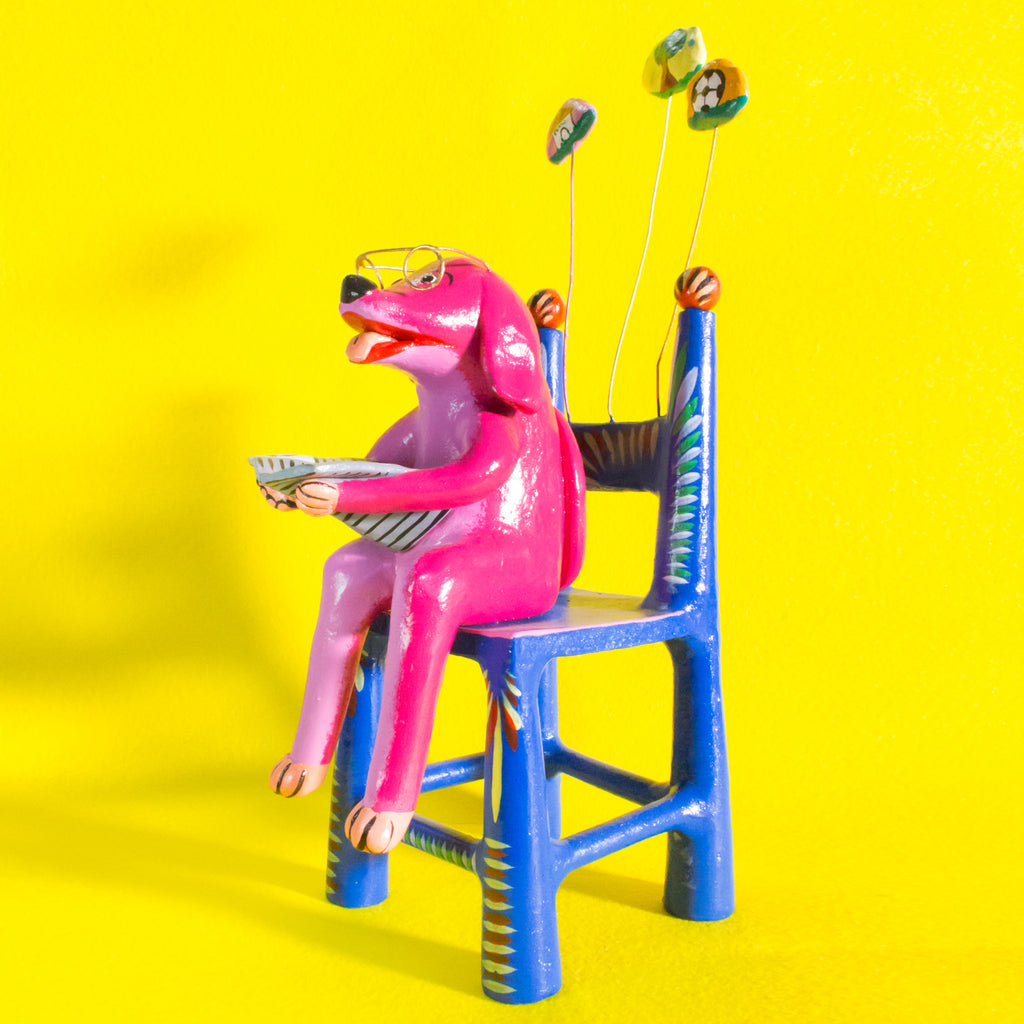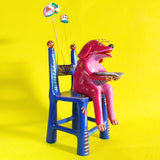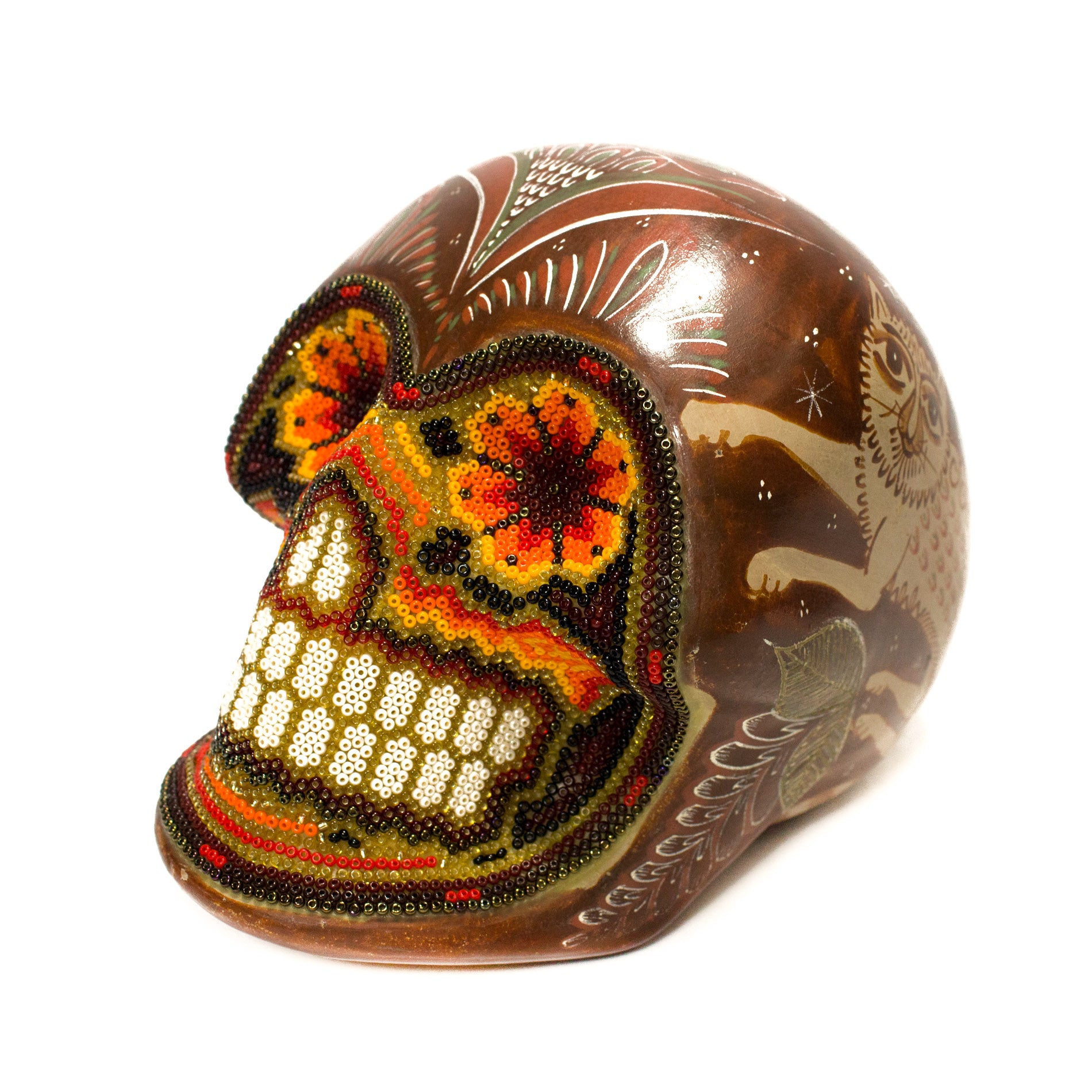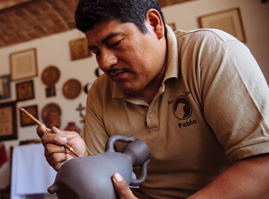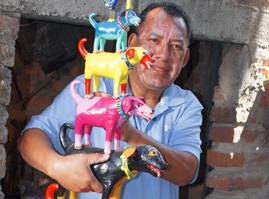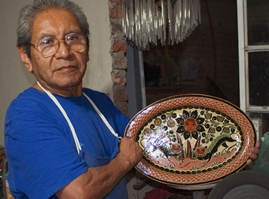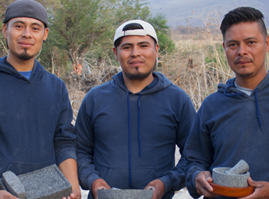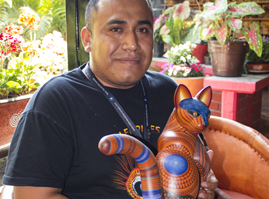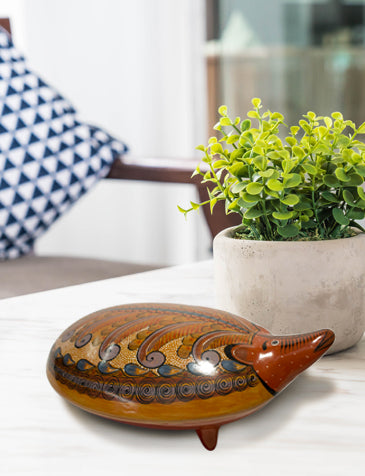This charming dog is reading his newspaper sitting on quite a large chair, this piece of Mexican popular art, is hand-painted with acrylic colors by the hands of Artisan Gerardo Ortega, who transmits happiness in each of his pieces.
Build your animal musicians collection today!
- Also available in other colors.
This piece is currently not in stock. Once your order is processed, the artisan will receive an order to produce a replica of the item you ordered. Given the handcrafted and artistic nature of their pieces, your purchase may have some variation in color and shape. It is these same variations that make every item unique. Elaboration times range from 15-25 days.
Measurements:
14.96" high x 5.12" width x 5.12" long
Weight:
2.99 lbs
Also known as “Fantasy Ceramic”, is the most popular pottery coming from Santa Clara de las Huertas, Tonala. It dates from the Colonial Era, and it stands out because of its cheerful and joy-filled figurines, with several different motives such as Lions, Dogs, Roosters, Trees of Life, and Noah’s arks, among others.
Betus Clay takes its name because; before firing and painting the piece, it is given a Betus oil bath (which is made from the resin that comes from Birch Trees). This type of pottery’s most characteristic features are the striking, fun and brilliant colors applied to Fantastic Animals, playful Bible Characters, and ingenuous architectural reproductions which are molded directly in the clay, with some other details produced in clay or plaster casts. Nowadays, some artisans mix traditional and modern processes to produce these crafts.
The process starts with the collection of clay in Tonala’s Mines, big chunks of soil are pulverized and then mixed with a stronger type of clay called “Liga” (a binding clay), the clays are kneaded and molded into unique forms. The oven is prepared, and pieces, sculpted days before, are fired. It is before firing, that the clay has a dark tone to it. The pieces must be dried outdoors before being fired, otherwise they may explode while in the oven. Each figure is then rubbed with Betus (Birch Tree) Oil, right before being fired, giving a lacquered aspect to the finished pieces. The firing process is carried on with a low temperature compared to other types of ceramics. Ovens are simple brick holes covered in antique tiles. After the pieces are fired, they are colored with industrial anilines, the final coating of Betus oil is applied directly with the hands, rubbed in without using any brushes. As of today, the usage of acrylic paints and synthetic lacquer have given brighter and more colorful figures, as well as making a faster production process.

Gerardo Ortega
Four generations of tradition do converge in Gerardo Ortega’s “Ortega’s Folk” Workshop, who, along with his artisan brothers, has been crafting surreal and fantastical pieces for over 40 years, with one of Santa Cruz de las Huertas’, Tonala, Jalisco, most representative techniques: Betus Clay.
His grandparents used to work in the fields, for both reap and sow, and on their free time, they dedicated to their art’s development. Gerardo’s grandmother designed pieces such as roosters, other animals, chandeliers, fruits and other surreal figures.
Gerardo Ortega is very known for his Trees of Life. His teachers were his father, Eleuterio Hernandez Ortega, and her Grandmother, Natividad Hernandez.
Gerardo Ortega, along with his brothers, Oscar and Junior, has been creating these whimsical clay figures for over 20 years. They follow his grandmother´s steps using the traditional “Barro Betus” technique. They are constantly looking for ways to innovate and developing new products, while remaining loyal to the arts, and expanding imagination while contributing socially to the community they live in. Gerardo has provided apprenticeship opportunities to young people who want to learn from his craft. Many have tried copying his style, but Gerardo remains as the original creator of these treasured pieces. His work can be found in museums all round the region. He currently resides in the state of Jalisco, Mexico.

